Born in the USA: USA to UK
American immigrant artists represented in the Ben Uri collection contribution to British visual culture since 1900.
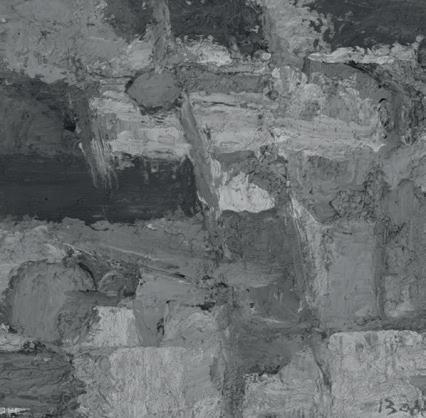
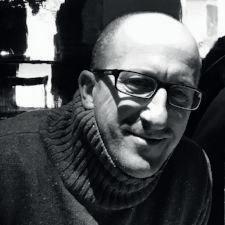

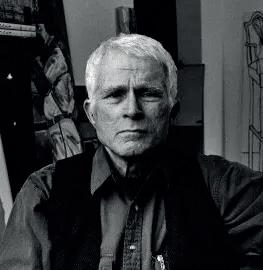
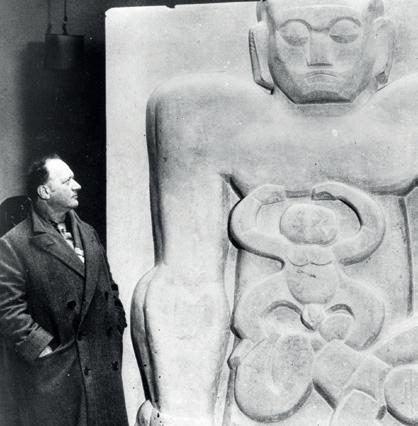
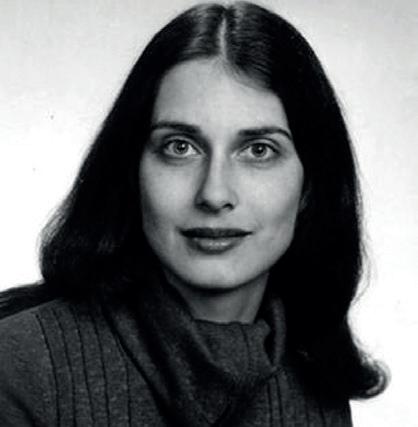

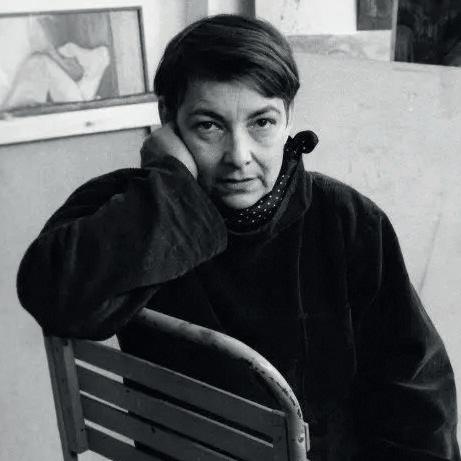
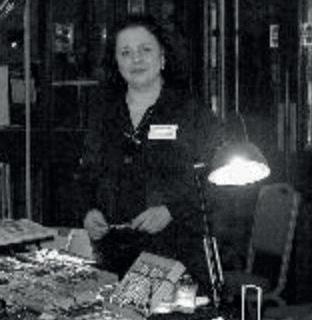
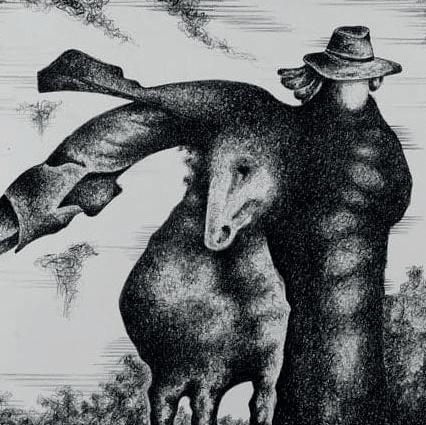
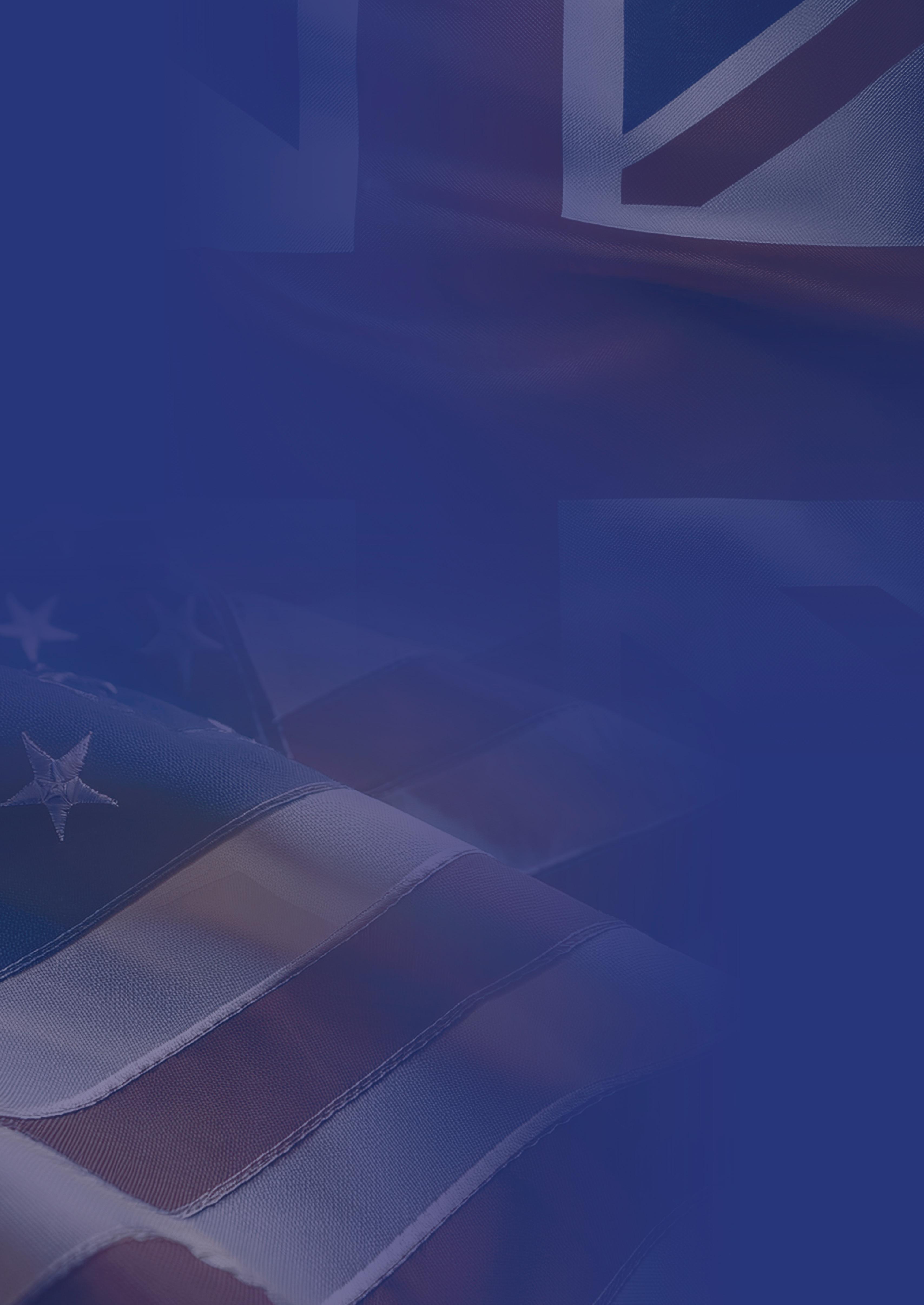
26 September - 31 October 2025

American immigrant artists represented in the Ben Uri collection contribution to British visual culture since 1900.











26 September - 31 October 2025
Celebrating, researching, and recording the richly diverse Jewish, Refugee, and wide Immigrant contributions to British visual culture since 1900. Ben Uri Gallery, Museum & Research Centre (Ben Uri) is a pioneering digitally led hybrid institution which, from its founding in Whitechapel in 1915 has flourished in London for 110 years. We explore its significance as it is awarded in our Greater London Enterprise Awards this year.
What makes Ben Uri Museum in St. John’s Wood distinctive is that it uses art very differently through digital and physical engagement in London.
It is the only museum in the country whose principal focus, 24/7, is on the wide Immigrant contribution to British art since 1900 and as a result is as interested in the artists as in their art. Its online presence is huge and equally distinctive with four independent sites led by benuri.org being the mother site linking to benuricollection.org.uk, buru.org.uk and dispora-artists.net.
The online presence is over 12,000 pages and unparalleled in its width and depth. Main features include some 80 online exhibitions, close to 1000 Collection works, 100 Kids programmes, 100 Arts and Mental Health programmes, 125 Podcasts, 250 Films, over 400 essays and critical reviews and most importantly an unrivalled 3300 fully researched biographies. Buru.org.uk presents over 1000 profiles principally of European descent and Diaspora-artists. net over 2300 principally recording the Black and Asian contribution. This uniquely comprehensive database was originally designed to satisfy the needs of students, scholars and researchers but Ben Uri have also found a growing number of the public are using it to check out family or friends.
It also maintains a vibrant physical museum gallery in Boundary Road, off the famous Abbey Road, in St. John’s Wood which presents 5 exhibitions a year. To compliment the exhibitions there is one of London’s most extensive art libraries which, like its exhibitions, is free to visit and use.
This pioneering and greatly successful transformation from the standard physical museum model to digitally led was conceived in 2017 and launched in 2018. By this reinvention Ben Uri has successfully changed from being Local to Global with over 30,000 web pages explored every month.
David Glasser, Director and Executive Chair of Ben Uri’s Trustees, shared: “Ben Uri's distinctive point of difference to other museums in London, the UK and Globally is our commitment to a digitally led future which we pioneered in 2018. Our principal point of difference to our colleague museums in London / UK is we have built an internationally recognised and respected focus on the Jewish, Refugee, and wide Immigrant contribution to British Art since 1900 presented online.”
BURU (the Research Unit's) extensive search capacity is recognised as ground breaking and is very easy to navigate and search by Surname, country of birth, year of migration to the UK and many other fields. Already over 3,300 profiles published we have close to 2,000 more to research and publish documenting the Jewish, the Refugee and the wide Immigrant contribution to British visual cultural heritage.
Speaking of the work of the small, committed team at Ben Uri, David shared: “Working for Ben Uri and being immersed in its 110 year history is much more a longterm emotional vocation than it is a job.”
Ben Uri is one of the very few museums recruiting. This is exactly why the qualities and abilities necessary for individuals joining the team are, in David’s words, “Initiative, self-starter, the seeing eye, a consumer first / led approach, a drive for excelling and excellence, numeracy and commercial experience of sponsorship and digital commerce to overlay academic prowess and a firm belief that our unique and distinctive philosophy of revealing the huge contribution that the Refugee and wide Immigrant contribution to British
David also believes “the immigrant contribution to British art since 1900 is of huge importance as a piece of the jigsaw of social integration.”
With such a strong and invested team behind it, 2025 will see even more of an increased digital footfall for Ben Uri as its online presence of over 350,000 users this year compared to less than 5,000 physical visitors to its exhibitions in St Johns Wood. David continued: “Time is the rarest resource for those living, working and visiting London. Museums must be available when the visitor can visit, physically and more importantly digitally so those who live afar can engage when it suits them.”
Explore all of Ben Uri’s websites whenever suits you as open 24/7 and discover the immigrant contribution to British art is far wider and deeper than Frank Auerbach, Francis Bacon, Frank Bowling, Lucian Freud, Mona Hatoum, Tam Joseph, Anish Kapoor, Paula Rego and Yinka Shonibare.
Contact: David Glasser, Company: Ben Uri Gallery, Museum & Research Centre Website: https://benuri.org/
Born in America: USA to UK. 26 September - 31 October 2025
Ben Uri uses art differently. One major difference is while all museums tell stories we focus as much on the creators as we do their creations.
Ben Uri is the country’s leading art museum and research centre on the Jewish, Refugee and wide immigrant contribution to British visual culture since 1900. Our distinctive cultural and academic assets include a collection of over 900 works by artists from over 40 countries and over 3,300 researched profiles published (buru.org.uk & diasporaartists.net) with another 1,800 candidates under study from over 120 countries of birth.
The institution was founded in 1915 in Whitechapel in the then Jewish immigrant populated East End of London by Lazar Berson (1882-1954), a Russian born Jewish immigrant artist from Paris.
In 2018 we published our ’Sustainability and Public Benefit Strategic Plan’ which employed a complete overhaul of our business / visitor engagement model to address the future digital decades ahead. We repositioned to be Digitally and Research led which has successfully transformed our impact to our growing global audience. This year our 4 web platforms (of over 12,000 pages) will service over 350,000 inquiries working extensively with universities across the country and abroad.
My thanks to the Ben Uri team, Sarah MacDougall for her scholarship and catalogue designer Ian Robson.
David Glasser
Executive Chair and, on this occasion, Curator.

Europe’s leading museum and research centre on the Jewish, Refugee and wide Immigrant contribution to British Art since 1900 seamlessly engaging with our collections, exhibitions and research library.
80+ Online and 3D Exhibitions
100+ School and Family programmes
100+ Arts and Mental Health interventions
125+ Podcasts & interviews
250+ Films and artist insights
400+ Collection artist biographies
400+ Research papers, essays, catalogues and PhD theses
600+ Archive exhibitions records
900+ Collection artworks on benuricollection.org.uk
3300+ Reseach Unit profiles on buru.org.uk / diaspora-artists.net
10,000 Pages of archives from 1915
Benuri.org & Buru.org.uk open 24/7 to suit you
Gallery exhibitions open every Wednesday to Friday at Boundary Road, London NW8
Following last year’s wide-ranging exhibition, Us: From There to Here, exploring diverse immigrant artists from the Ben Uri Collection, this display returns the focus to a single country of origin, highlighting selected artists born in the USA. In contrast to their European counterparts, often fleeing war, persecution or otherwise displaced in the first half of the twentieth century, these artists made voluntary journeys for professional, personal or educational reasons, predominantly after the Second World War.
Probably the best-known, as well as the earliest artist to arrive, was sculptor Jacob Epstein, born into a New York family of Russian/Polish Jewish immigrants, who settled in London in 1905, after five years in Paris. From his first public commission in 1907 to create the (now mutilated) former British Medical Association Building sculptures, he became a figure of enormous controversy, as frequently reviled for his public sculpture as he was respected and sought after for his portraits. The latter span his career and range from Augustus John’s two-year-old son, Romilly (1907) to the renowned, exiled German-Jewish physicist Albert Einstein (1933) and an unidentified Arab girl, who modelled as the archetypal Shulamite Woman (1935).
Painter, printmaker and draughtsman R. B. Kitaj led the postwar generation, moving to England in 1958 to complete his training at the Ruskin School of Art, Oxford, then the Royal College of Art, London, alongside David Hockney. Kitaj coined the so-called ‘School of London’ group to describe himself and fellow postwar figurative painters including Michael Andrews, Frank Auerbach, Francis Bacon, Lucian Freud and Leon Kossoff. His portrait of German-Jewish émigré statistician Claus Moser was originally commissioned for the Royal Opera House. Chicago-born Alfred Cohen moved to London in 1960, following his first solo London exhibition at Ben Uri in 1958. Over the next three years, in a series of sell-out shows, his panoramic cityscapes charted the changing face of the capital. More than 20 years after his New York debut, Pennsylvanian Howard Baer held his first solo London exhibition at Ben Uri in 1965. Edward Toledano completed his art education at Saint Martin’s School of Art in 1983, thereafter exhibiting at Ben Uri.
The 1970s brought a diverse group of women artists including Sandra Fisher, who moved to England in 1971 to pursue a full-time career as a painter; her portraiture frequently depicted other artists, with whom she often collaborated. The following year she was hired as studio assistant to Kitaj, whom she married in 1983, influencing his subsequent artistic exploration of his own Jewish identity. Draughtswoman, printmaker and former medical illustrator Jacqueline Morreau settled in London in 1972; fighting gendered notions of identity, particularly in her re-imaginings of mythological and biblical themes, she advanced the Feminist Art Movement in Britain as both artist and curator. Phyllis Gorlick-King also embraced a dual career as a painter and dealer in art and antiques.
Heritage is a dominant theme in the work of artist and curator David Gryn and painter Michele Franklin, who both came to England as children, training at Saint Martin’s and Camberwell Schools of Art, respectively. Son of Holocaust survivor Rabbi Hugo Gryn, David Gryn’s work frequently draws on his father’s experience and his own upbringing, while Franklin’s youthful self-portrait explores her part African-American, Native American and British Jewish heritage which brings the exhibition full circle.
Sarah MacDougall, Head of Collections and Special Projects
Howard Baer (1907 Pittsburgh, USA - 1986 New York, USA)
Cartoonist, illustrator, painter and printmaker Howard Baer was born into a Jewish family in Pittsburgh, Pennsylvania, USA in 1907. After studying at Carnegie Technical Institute in Pittsburgh, he moved to New York in 1930. He intitially worked as an illustrator, producing numerous cartoons for magazines including The New Yorker and Esquire, and also illustrated books. From 1944, he was an artist war correspondent with the US Medical Corps in China, Burma and India, carrying out paintings of the Medical Corps at the front (Pentagon’s Archives of War collection). He had solo exhibitions at the A.A.A. Gallery, New York in 1940 and 1945, and after the war travelled extensively, also showing at the Hyrene Gallery, Paris in 1950, P.P.A. Gallery, Pittsburgh (1953), Bogden Gallery, New York (1956), Philadelphia Gallery, Paris (1958), Bodley Gallery and Trabia Gallery, New York (both 1960), 327 Gallery, Albany, New York (1961), 88 Gallery, Rome (1962) and Toninelli Arte Moderna, Milan (1965). He spent time in London from 1960 and held his first solo London show of paintings at Ben Uri Gallery in 1965, followed by a second solo show in 1972, a joint exhibition with Edith Greenwood of prints and sculptures in 1980, and a further joint show of paintings by Baer and prints by Annette Rowdon in 1986.
Howard Baer died in New York, USA in 1986. His work is in the Ben Uri Collection and in collections abroad including The Metropolitan Museum of Art, New York; Collection of NYU, New York; Peabody Museum, Nashville, Tennessee; and the Butler Art Institute, Youngstown, Ohio.
Outside a City IV, 1963 oil on canvas
25.5 x 30.5 cm
Signed: (lower left): Baer

Sandra Fisher
(1947 New York, USA – 1994 London, England)
Painter Sandra Fisher was born into a Jewish family in New York, USA on 6 February 1947 and moved to Miami with her family in 1948. She drew and painted from an early age, initially guided by her mother, Ethel Fisher; her sister, Margaret Fisher, is a performance and media artist. Sandra studied minimalist art and sculpture at the Chouinart Art Institute, graduating in 1968, before moving to London in 1971 to pursue a full-time career as a painter. Favouring portraiture, the male and female nude, and depictions of dancers, singers, actors and musicians, from 1975 she began to hire models to sit for her. She exhibited widely and received various commissions including from London Transport to contribute to their Art on the Underground series. In 1972 she was hired by Marlborough Gallery as studio assistant to the painter R.B Kitaj, whom she married in 1983; their son Max was born the following year. In 1985 her work was included in in the survey, Representation Abroad, at the Hirshhorn Museum, Washington DC. Sandra Fisher died of a brain haemorrhage in London, England on 19 September 1994, shortly after the ending of Kitaj’s Tate retrospective. Her work is held in UK collections including the London Transport Museum, Pallant House Gallery and Tate. In 2003 her work was included in a Kitaj exhibition at LA Louver Gallery, Los Angeles, and in 2006 a retrospective entitled An American Abroad: Sandra Fisher and her School of London Friends was held at the New York Studio School.
Portrait of Meir Appelfeld, 1990 monotype on paper
33 x 27 cm
Signed and dated: (lower right): ‘Sandra Fisher 1990’

Alfred Cohen (1920 Chicago, USA – 2001 King’s Lynn, England)
Alfred Cohen was born to parents of Latvian-Jewish heritage in Chicago, USA on 9 May 1920. After serving as an aerial navigator with the US army air force during the Second World War, he resumed his interrupted studies at the Chicago Institute of Art, graduating in 1949 and travelling to Europe on a scholarship. In the 1950s, with his first wife, Virginia (née Adler), he shared a studio in Paris with the Californian artist Sam Francis and held solo exhibitions in Germany and Paris. In France and Rome, he mixed with movie stars including Ingrid Bergman, Sophia Loren and Kirk Douglas, and his patrons included James Mason, Sam Wanamaker and Stanley Baker. He moved to London in 1960 and between then and 1963, carried out a series of panoramic Thames riverscapes and powerful commedia dell’arte figures that were critically acclaimed and often sold out. Following a divorce, he moved to Kent with his second wife, Diana Saunders, and finally to north Norfolk in 1978, where the couple converted the old schoolhouse at Wighton, near Wells-next-the-sea, into a studio, print workshop and art gallery. In the country he focused on the British landscape and the Channel coasts, interiors, people and still lives, particularly of flowers.
Interior at Ballards, c. 1964-78 oil on paper
40 x 50.5 cm

Cohen’s first London exhibition was with Ben Uri Gallery in 1958, followed by further solo London shows at the Obelisk Gallery (1960), the Kaplan Gallery (1961), the Brook Street Gallery (1963) and with émigré dealers Henry Roland and Gustav Delbanco of Roland, Browse and Delbanco (1969, 1974 and 1976). In addition, he also held solo shows in Belfast, Cambridge, Harrogate, King’s Lynn, Leeds, Rye and York, as well as Heidelberg, Hannover, Paris, Toronto, Montreal, Tokyo and Cape Town. He had joint exhibitions with Josef Herman, Patrick Hall, and Mary Newcomb and his work was also included in international mixed exhibitions including ‘Five Americans in Britain’ at the US Embassy, London.
Alfred Cohen died in King’s Lynn, Norfolk, England in 2001. His work is represented in UK collections including the Ben Uri Collection, the Contemporary Art Society, Norwich Castle Museum & Art Gallery, Pembroke College, Oxford, the Paintings in Hospitals Collection and the Sainsbury Centre. A recent reassessment of Alfred Cohen’s life, career and reputation has included two major study days at the Courtauld Institute of Art (2018) and the Paul Mellon Center (2019), respectively, and a major centenary exhibition, co-curated by Max Saunders and Sarah MacDougall at The Arcade, Bush House, King’s College London (2020) with an accompanying monograph.
The View from Panton House, 1962 oil
71 x 90 cm

(1880 New York, USA – 1959 London, England)
Sculptor Jacob Epstein was born into a relatively prosperous family of Russian/PolishJewish immigrants in New York City, USA on 10 November 1880, but as a teenager rejected the Orthodoxy of his upbringing. From 1893–98 he attended classes at the Art Students’ League and was inspired by the multicultural communities around him. After spending the winter of 1899–1900 cutting ice in New Jersey, he turned to sculpture, working in a bronze foundry (1901–2). On the proceeds of his first professional commission to illustrate Hutchins Hapgood’s The Spirit of the Ghetto (1902), he sailed to Europe. In Paris he studied at the École des Beaux-Arts (1902–3) and the Académie Julian (1903–4), sharing the appreciation of artists including Picasso and Modigliani, for Indian and West African art traditions.
Epstein moved to London in 1905 and in 1907 he received his first major British commission, creating 18 nude sculptures for the facade of the British Medical Association Building (now Zimbabwe House) on the Strand. This commission, like many of Epstein’s other early works, was highly controversial and criticised as indecent. Epstein’s second public commission to carve Oscar Wilde’s tomb for Père Lachaise cemetery, Paris (completed in 1912), directly inspired by Assyrian sculpture in the British Museum, abandoned the conventional figure and proved equally controversial. A champion of direct carving, he was also associated with the short-lived Vorticist group, co-curated the so-called ‘Jewish Section’ at the Whitechapel Art Gallery’s ‘Review of Modern Movements’, with David Bomberg in 1914, and was a co-founder of the London Group. During the First World War, Epstein was conscripted into the Jewish 38th battalion of the Royal Fusiliers in 1917 but was discharged, without seeing active service following a breakdown in 1918.
Epstein’s work often challenged prevailing notions of sexuality and beauty and favoured the non-European model. He had solo shows at the Leicester Galleries in 1917, 1920, 1924, 1939 and 1950, a retrospective at Tate in 1952. His public commissions continued to attract controversy including the carved relief Rima (1924–5, Hyde Park), a memorial to the naturalist and author W. H. Hudson, and the monumental figure groups, Night and Day (1928–9), for Charles Holden’s London Underground headquarters, and later monumental carvings including Genesis (1930), Ecce Homo (1934–35), and his autobiographical Jacob and the Angel (1940-41, Tate). However, his portrait heads, usually cast in bronze, were always in demand. Epstein also painted in watercolour and gouache, and his scenes of Epping Forest were frequently exhibited in Leicester Galleries, London. He exhibited in group shows at Ben Uri Gallery from 1934 onwards, and was Patron of the Ben Uri art Society in 1936–37. During the Second World War was commissioned by the War Artists’ Advisory Committee to execute six portrait busts including one of Winston Churchill. Epstein was knighted in 1954.
Epstein completed his large bronze Bowater House group for Edinburgh Gate, Knightsbridge (1958–9) on the day that he died in London, England on 21 August 1959; he was buried in Putney Vale cemetery. A posthumous exhibition of bronzes was held at Ben Uri Gallery in November 1959. In 1980, his centenerary year, restropsectives were held at Ben Uri Gallery, Birmingham Museum & Gallery and Tate. More than 300 of his works are in UK public collections including the Ben Uri Collection, the National Portrait Gallery, Tate and the V&A.
Lydia (aka Second Portrait of Lydia), 1931 bronze (height) 49.7 cm

Romilly John, 1907 bronze (height) 30 cm

Shulamite Woman (Arab Girl), 1935 bronze (height) 51.5 cm

Gertrude (The Bather), 1911 bronze (height) 94 cm

Bust of Jacob Kramer,1921 bronze (height) 65.5 cm

Albert Einstein, 1933 bronze (height) 45 cm

L. Michèle Franklin (1958 Vermont, USA)
(Linda) Michèle Franklin was born in Putney, Vermont State, USA, on 26 December 1958 to a British-Jewish father and African-American mother of part Native American Indian descent. She was influenced by her grandmother, the painter Miriam Israels, whose second husband, Naum Gabo, encouraged her to paint. In 1966, the Franklin family immigrated to England, settling in Hampstead. Franklin studied at Camberwell School of Art (1977–82), where her tutors included the sculptor Brian Taylor (1935–2013), whom she later married, and she stayed on a year to study etching, continuing her studies at the International School of Graphics in Venice.
After her return to England, Franklin began to work part-time, teaching art therapy, drawing, painting and sculpture at Kingsway College, London for the next decade. In 1983, she won First Prize for Oil Painting at the Mall Galleries, London and her first solo exhibition at the Peter Potter Gallery, Haddington, Edinburgh took place the following year. In 1985, Ben Uri purchased her watercolour, ‘Banished’ and she subsequently exhibited with the gallery in group shows in 1986 and 1988. In the same year, she held an exhibition entitled ‘Women Together’, at the Barbican Centre, London and became Associate Lecturer in Art at Camden Adult Education Institute. Further solo shows followed including at Sue Rankin Gallery in 1992, and her Holocaust series, ‘Where Was the Whole World?’, inspired by Claude Lanzemann’s landmark documentary ‘Shoah’, was exhibited at the Sternberg Centre for Judaism, London, in 1999. Her oil portrait, ‘My Father’ (2013), was shortlisted for the National Portrait Gallery’s annual BP Portrait award. A solo show of her etchings, paintings and drawings was held at Blackheath Halls (2015) and a joint show with her late husband, Brian Taylor, at the Yehudi Menuhin School (2016). More recently, she has held a solo exhibition at Red Lion Hall in London (2023). She has also exhibited in the Royal Academy Summer exhibitions, with the Royal Institute of Oil Painters and with the New English Art Club.
Michèle Franklin lives and works in London.
Banished, 1985 watercolour on paper
64.5 x 46 cm
Signed: (lower left): L. Michele Franklin; (lower centre): Banished; dated, (lower right): 1985

Body Bank, 1998 charcoal on paper 29 x 39 cm
Signed: (lower left): ‘Franklin ‘98’

Mohamed drumming, 2025 oil on canvas
90 x 71 cm
I first saw Mohamed Gueye playing classical African music at the Wigmore Hall in London. I was mesmerised by his drumming and presence.
He led the group with great confidence and his performance was deeply emotional.
I was with my friend Tim from Lagos and I told him I’d love to paint Mohamed. He said, “Why don’t we go and meet him then?!” I said, “Well we don’t know him!”
Tim said that didn’t matter as they were both African.
It turned out he was right as to my amazement, Mohamed agreed to model for me while drumming.

This turned out to be a challenge in itself as painting someone moving all the time is extremely difficult. I managed to get him to keep still for short amounts of time as that’s a very unnatural thing for him to do.
But being an artist himself, he seemed to understand while watching me work, that I required his help and collaboration.
Self portrait, 1976 oil on board
69 x 51 cm
I painted this self portrait when I was 18. I painted it on my own at home as it was a set piece of homework to be brought in to a public criticism from the teachers.
I was surprised when I brought it in that they seemed to like it so much. It had been a great challenge to me, struggling with dying roses, a lace dressing gown which ended up being thickly painted with a pallet knife, and of course my own face. The more I looked at it, the more it reminded me of Picasso’s African mask paintings. That helped me to simplify the shapes.
I’d recently cut my long plaits off and been shocked to discover that my short hair was an Afro. “Why didn’t you tell me this would happen to my hair?!”
I asked my mother.

Very resignedly she replied “this is the thing about mixed race hair , you never know what it’s going to do!”
(1939 Syracuse, New York, USA)
Artist, art dealer and antiques expert Phyllis Gorlick-King was born into a Jewish family in Syracuse, New York in 1939 and now lives in London. Her paintings - she favours oil on linen - have been included in group shows including ‘People and Structure’ at the South London Art Gallery in 1977 and the 1988 Royal Academy Summer Exhibition. She also creates lithographs.
Tuscany by Train, 1978
acrylic on canvas
85.5 x 85.5 cm
Signed and dated: (lower left: ‘Phyllis Gorlick-King, 1978’

Artist and curator David Gryn was born into a Jewish family in New York in 1963 but has lived in London since he was a child; his father, Rabbi Hugo Gryn (1930-1996), served as assistant rabbi and later as senior rabbi at the West London Synagogue from 1964-96. David Gryn trained as a painter, studying at St Martin’s School of Art in London. Many of his works are inspired by his own upbringing, as well as his father’s experience as a Holocaust survivor. He has participated in group shows including the Ben Uri Open Exhibition in 1985 and three years later, in 1988, he held a joint exhibition at Ben Uri with Laura Godfrey-Isaacs. In 2001, Gryn founded Artprojx, a company aiming to provide a space for digital and video artists and potential investors and galleries looking to support their work, going on to establish Daata Editions, of which he is currently Director, a platform that allows viewers to download specially-commissioned digital art onto their own personal devices. From 2010 to 2017 Gryn was the Curator of Film and Sound at Art Basel in Miami Beach. He lives and works in London.

Trio, 1987 etching on paper 22 x 14.5 cm
Signed and dated: (lower right): David Gryn, 29/9/87
(1932 Cleveland, Ohio, USA – 2007 Los Angeles, California, USA)
Painter, printmaker and draughtsman R. B. (Ronald Brooks) Kitaj was born to a Hungarian father and an American mother (of Russian-Jewish immigrant parentage) in Cleveland, Ohio, USA on 29 October 1932. After his parents divorced, his mother married Walter Kitaj, a Viennese-Jewish refugee and research chemist, and Kitaj took his stepfather’s name. Following an early career as a merchant seaman, he studied painting at the Academy of Fine Arts in Vienna and at Cooper Union in New York. He served in the US army for two years, travelling widely in France and Germany, before moving to England to complete his training at the Ruskin School of Art in Oxford (1958-59) and the Royal College of Art, London (1959-61), alongside David Hockney, Derek Boshier, Allen Jones and Patrick Caulfield, among others. His first solo exhibition was held at Marlborough Fine Art, London in 1963 and his early work, executed in bright, flat colours was associated by some critics with the Pop Art Movement, a label he rejected. In his later years (particularly after his second marriage to fellow painter Sandra Fisher), he made numerous works exploring his Jewish identity. During the 1960s Kitaj taught at Ealing Art College, Camberwell School of Art and the Slade School of Fine Art, and latterly, at the University of California, Berkeley in 1968. In 1976 he selected work by a group of
Self-Portrait in Flat Cap, 1981 lithograph on paper
76.5 x 57 cm
Signed: (lower left): ‘KITAJ 10/50’

Red Self-portrait after Masaccio, 2005 oil on canvas 61 x 61 cm (reproduction)

British figurative painters, whom he famously described as representing a ‘School of London’ for an important exhibition entitled ‘The Human Clay’, organised by the Arts Council of Great Britain and held at the Hayward Gallery, London. This much-debated term has come to apply to a fixed group including Michael Andrews, Frank Auerbach, Francis Bacon, Lucian Freud and Leon Kossoff, as well as Kitaj himself, although the term was not accepted by many of its so-called members.
In 1982 Kitaj was elected to the American Academy of Arts and Letters and he became a Royal Academician in 1985. Following a sharply critical response to his 1994 Tate exhibition however, and the sudden death of his wife, Sandra, only weeks after its opening, Kitaj relocated permanently to Los Angeles in 1997. Debilitated by Parkinson’s disease in his later years, he committed suicide in Los Angeles, USA on 21 October 2007. In 2001 an important exhibition of his work was held at the National Gallery, London. His work is represented in numerous UK collections including the Ben Uri Collection, the British Council Collection, Pallant House Gallery, Tate, the Yale Center for British Art, and the Whitworth, as well as international collections including MoMA, New York.

Sir Claus Moser, 1987 pastel on paper
77 x 57 cm
Signed: (lower left): Kitaj
(1929 Milwaukee, Wisconsin, USA – 2016 London, England)
Artist Jacqueline Morreau was born into a middle-class Jewish family in Milwaukee, Wisconsin, USA on 18 October 1929. She attended Chouinard Art Institute, won a scholarship to Jepson Art Institute and briefly studied in France before she qualified as a medical illustrator in 1958. Throughout the 1950s and 1960s she focused primarily on drawing and printmaking. In 1972 she settled in London, where she took art classes in Camden and began to exhibit and to produce portfolios of prints with publishers including Paupers Press. Her drawings also appeared on book covers from the Women’s Press and Bloodaxe Books, and Scarecrow Press in the US. She held her first solo exhibition, ‘Drawn from Life’, at the Women’s Arts Alliance in London in 1978.
Morreau also advanced the feminist art movement in Britain by fighting the sexism restricting women’s access to exhibition spaces and by staging two touring exhibitions of figurative work by women artists: ‘Women’s Images of Men’ and ‘About Time’, co-curated with Catherine Elwes Pat Whiteread and Joyce Agee, which began at London’s ICA in 1980, and then toured internationally. She also promoted women artists in her work as a curator of the Wales Drawing Biennale and as a trustee of the Rootstein Hopkins Foundation. She is recorded at the British Library’s Artists’ Lives archive. Jacqueline Morreau died in London, England on 13 July 2016. Her work is in UK public collections including the Arts Council, the British Museum, the V&A, and The Women’s Art Collection, Murray Edwards College at the University of Cambridge.
Psyche’s Journey to the Underworld, 1994 etching on paper
24.5 x 29.5 cm
Signed: (lower right): Morreau

Edward Toledano
(1919 New York, USA – 2009 New York, USA)
Painter, sculptor, printmaker and illustrator Edward Toledano was born into a Jewish family in New York, New York, USA on 11 March 1910. He studied at the Yale University School of Fine Art and, later, at the Sir John Cass School of Art in London. During the 1930s he was a stage and screen actor under the name Edward Trevor, moving sometime before 1968, with his Moroccan-French wife, to London, where he became a full-time painter, draughtsman, and sculptor. His work was described as ‘surrealist’ in nature and in 1975 he became the first American-born artist to have a solo exhibition at the Victoria Art Gallery, Bath. He had three solo exhibitions at Ben Uri in 1977, 1979 and 1981 - the latter a retrospective. He also sat on Ben Uri’s Council between 1990–92.
Toledano’s final months were photographed by his son, Phillip Toledano, in a project he later titled ‘Days with my Father’. Phillip’s photographs and corresponding blog entries comprise most of the surviving information about Edward, such as his acting career and his move to London. ‘Days with my Father’ turned into an exhibit at Gallery 339 in Philadelphia, with Phillip’s photographs displayed alongside his father’s drawings.
Edward Toledano died in New York City, United States on 19 March 2009. His work is held in a number of public collections including Southampton City Art Gallery, Tate, the Smithsonian and the Tel Aviv Museum of Art.
Single Image, c. 1986 lithograph on paper
50 x 60.4 cm
Signed: (lower right): ‘Edward Toledano’

Europe’s leading museum and research centre on the Jewish, Refugee and wide Immigrant contribution to British Art since 1900 seamlessly engaging with our collections, exhibitions and research library.

80+ Online and 3D Exhibitions
100+ School and Family programmes
100+ Arts and Mental Health interventions
125+ Podcasts & interviews
250+ Films and artist insights
400+ Collection artist biographies
400+ Research papers, essays, catalogues and PhD theses
600+ Archive exhibitions records
900+ Collection artworks on benuricollection.org.uk
3300+ Reseach Unit profiles on buru.org.uk / diaspora-artists.net
10,000 Pages of archives from 1915
Benuri.org & Buru.org.uk open 24/7 to suit you Gallery exhibitions open every Wednesday to Friday at Boundary Road, London NW8
Recording the Refugee and Immigrant contribution to British visual culture since 1900